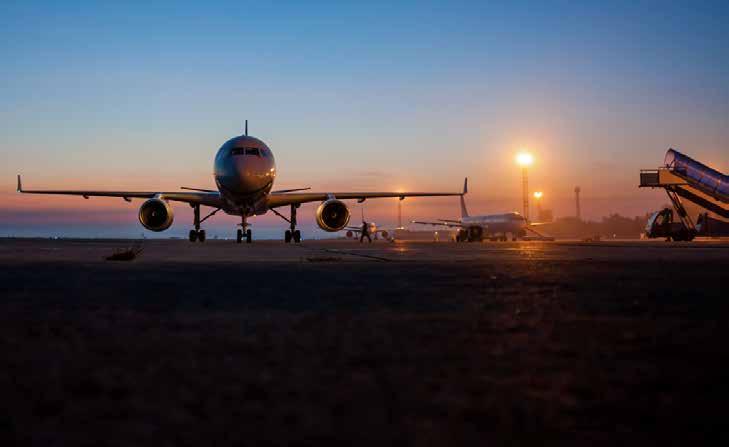
1 minute read
Aviation environmental sustainability in Africa
As global leaders converge at the Mediterranean Pavilion in Egypt for the UN climate change Conference (COP 27) from November 6th to the 18th 2022, the world is watching and waiting for major decisions that will protect our planet from the adverse effects of climate change. This edition of the climate change conference shall allow Africa to spotlight its special needs, circumstances and opportunities. Building on the outcomes and momentum of COP 26 in Glasgow, nations are expected to demonstrate at COP 27 that they can walk the talk by putting their commitments under the Paris Agreement into action in a just and equitable manner.
This is also an opportunity for the air transport sector in Africa to rise up to the occasion by designing and implementing adaptable decarbonizing policies in the industry. The global aviation industry contributes about 2% to global carbon emissions and there have been great strides towards cleaner skies and a greener environment. But it is not only Carbon dioxide that is an issue.
Advertisement
Author: Moses Ngwanah Chief Operating Officer GS Aviation, Madagascar
According to the Intergovernmental Panel on Climate Change (IPCC 2011), Aviation is responsible for 3.5% net of Anthropogenic ERF
GHG- Green House Gases (Carbon Dioxide-C02, Nitrogen-NOX, Fine particulate matter-PM);
Contrails and Aircraft Induced Cloud-AIC.
The global aviation industry has invested heavily in R&D as a means to reduce its footprints on global warming. In response to the need to reduce carbon emission while minimising market distortion, ICAO designed the Carbon Offsetting and Reduction Scheme for International Aviation (CORSIA) which is being implemented in 3 phases. But this market-based measure may not be sustainable in the long run, reasons for which the shift is towards:
I. Sustainable Aviation Fuels (SAF) which include Biofuels and Power to Liquid Fuels (PtL);

II. Fuel Cells (Electric) and Hydrogen Combustion.
SAF looks very likely to be the most acceptable and adaptable solution given the difficulties related to hydrogen combustion (size and production) and Fuel Cells (capacity and range).
Is the aviation industry in Africa ready?








